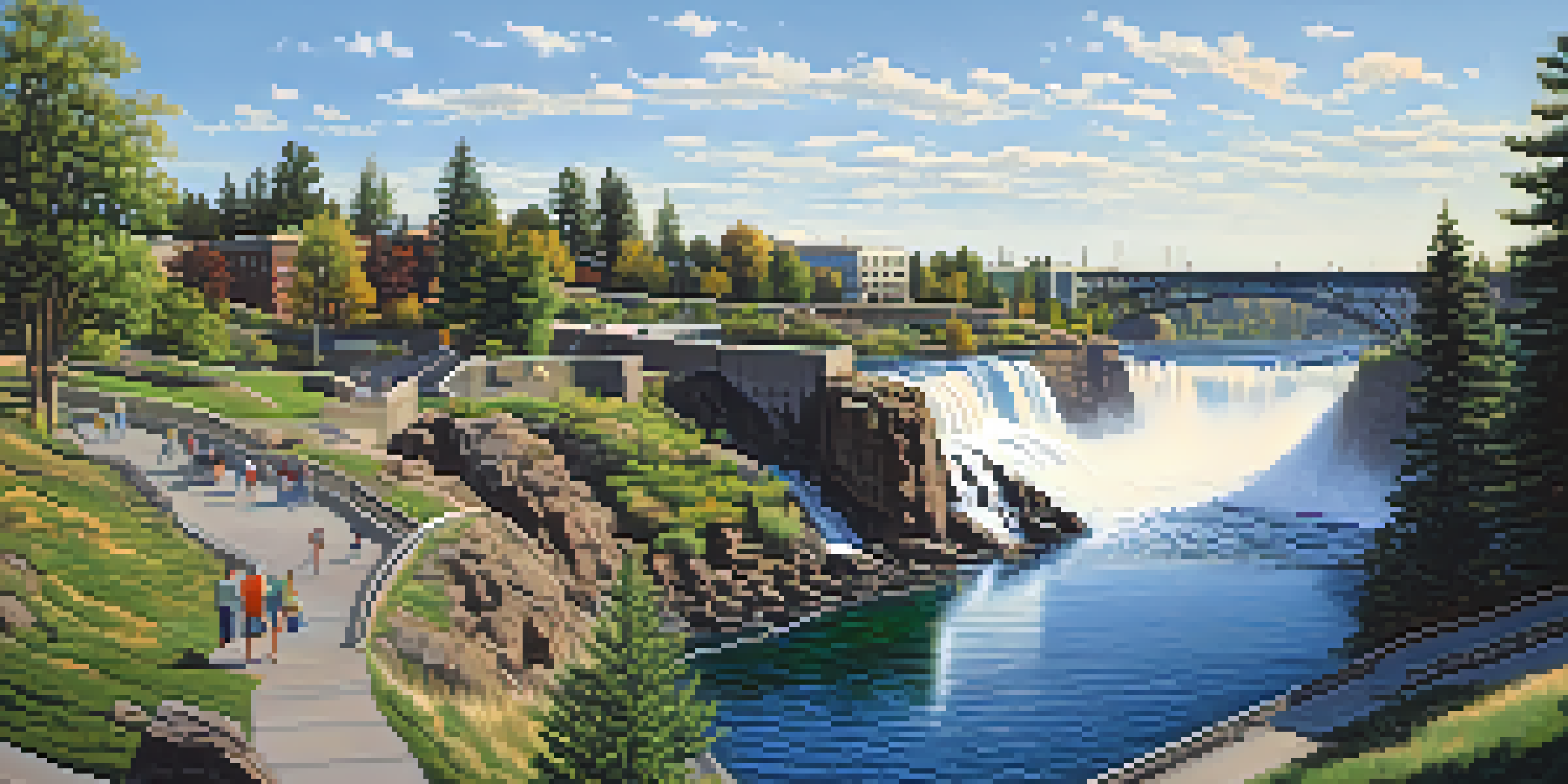Cultural Heritage: Spokane's Historical Landmarks Revealed

Introduction to Spokane's Cultural Heritage
Spokane, Washington, is a city steeped in rich history and vibrant culture. From its Native American roots to its development during the railroad boom, the city has numerous stories to tell. Understanding Spokane's cultural heritage is essential for appreciating its historical landmarks, which serve as physical reminders of its past. Let’s embark on a journey to uncover these iconic sites and their significance.
The Historic Davenport Hotel: A Jewel of Architecture
Opened in 1914, The Davenport Hotel is an architectural masterpiece and a symbol of Spokane's luxury. Designed by Kirtland Cutter, the hotel features stunning details like the grand lobby and the famous Peacock Room. Over the years, it has hosted numerous dignitaries and celebrities, making it a cornerstone of Spokane’s social scene. Today, it stands not only as a hotel but as a testament to the city’s opulent past.
Spokane's Rich Cultural Heritage
Understanding Spokane's cultural heritage is key to appreciating its historical landmarks and the stories they tell.
The Spokane Falls: Nature Meets History
The Spokane Falls are not just a beautiful natural feature; they hold deep historical significance for the local Indigenous tribes. For centuries, the falls have been a source of life, providing fish and water for the tribes. The area around the falls has been transformed into Riverfront Park, where visitors can enjoy stunning views while learning about the falls’ importance. This blend of nature and history makes the falls a must-see landmark.
The Old National Bank Building: A Financial Legacy
The Old National Bank Building is a prime example of Spokane's economic growth in the early 20th century. Completed in 1910, its Beaux-Arts architecture stands out among the city’s skyline. Once a bustling financial hub, the building now serves as a reminder of the city’s banking history. Its preservation showcases the importance of maintaining historical structures that played a role in shaping the community.
Architectural Marvels of Spokane
Landmarks like The Davenport Hotel and the Spokane County Courthouse showcase the city's unique architectural styles and historical significance.
The Fox Theater: A Cultural Epicenter
The Fox Theater, with its Art Deco design, is a hallmark of Spokane's cultural landscape. Originally opened in 1931, it has been lovingly restored and serves as a venue for performances, concerts, and events. The theater not only reflects the artistic spirit of Spokane but also its commitment to preserving cultural venues. Attending an event here is an experience steeped in history and creativity.
The Spokane County Courthouse: A Historical Landmark
The Spokane County Courthouse, completed in 1895, is a stunning example of Richardsonian Romanesque architecture. Its iconic clock tower and intricate stonework make it a visual centerpiece in the city. Beyond its architectural beauty, the courthouse plays a significant role in Spokane's legal and civic history. It remains an active courthouse, bridging the past with contemporary governance.
Nature and History at Spokane Falls
The Spokane Falls not only offer breathtaking views but also serve as a vital historical site for local Indigenous tribes.
The Steam Plant: Industrial Heritage Preserved
Spokane's Steam Plant, built in 1916, is a fascinating landmark that highlights the city’s industrial heritage. Once a major source of steam heat for downtown buildings, it has been repurposed into a unique restaurant and brewery. The preservation of this site reflects a growing trend of revitalizing industrial spaces while honoring their historical significance. Visitors can enjoy a meal or drink while soaking in the rich history of the plant.
Conclusion: Celebrating Spokane's Cultural Heritage
Spokane's historical landmarks are more than just buildings; they tell the story of a community. Each site carries its own unique narrative, contributing to the rich tapestry of Spokane's cultural heritage. By exploring these landmarks, we not only celebrate the past but also foster a deeper connection to the present. Let’s continue to cherish and preserve these treasures for future generations to enjoy.